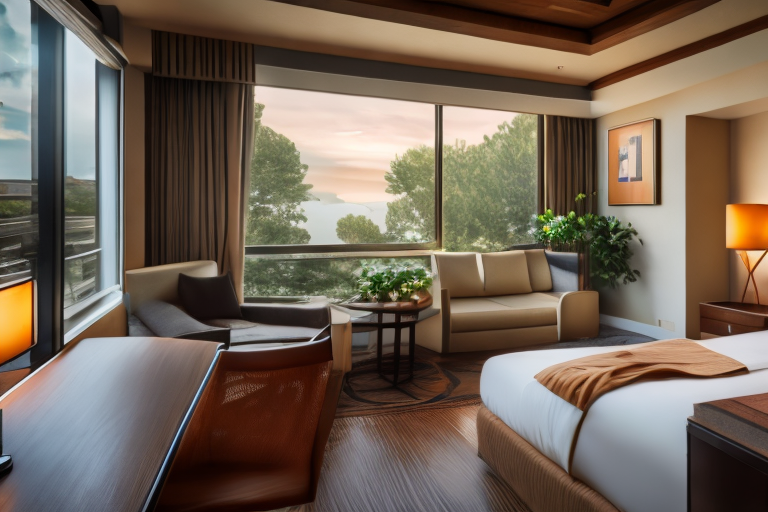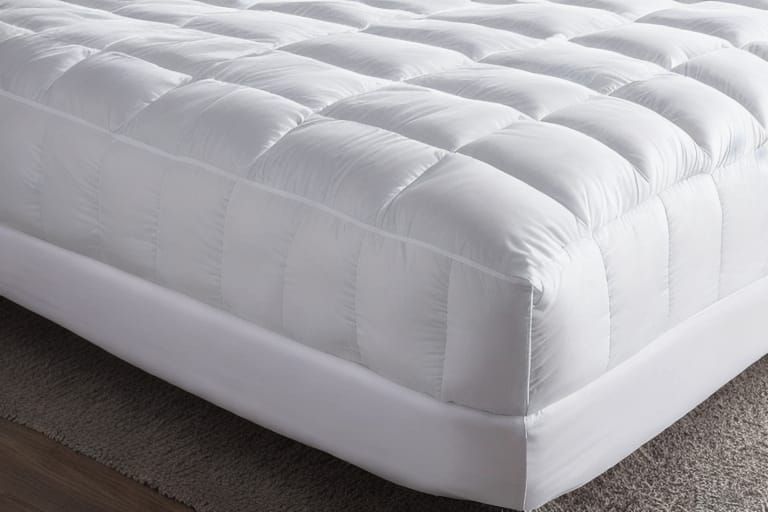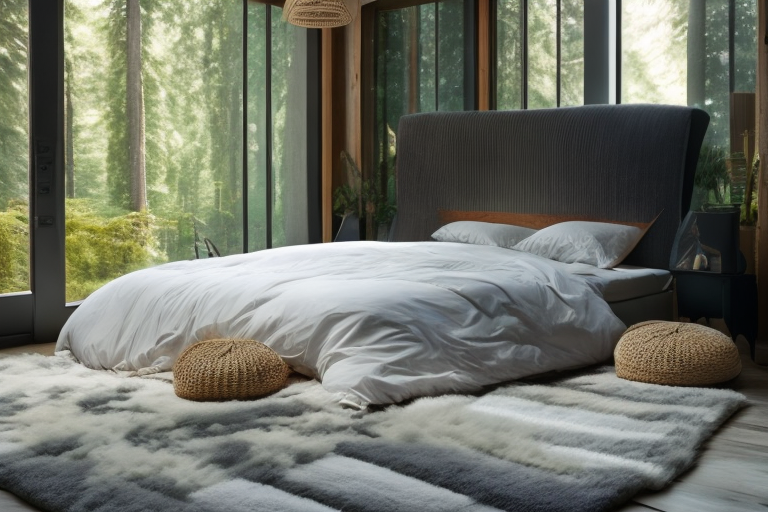When it comes to selecting the perfect comforter, one of the biggest dilemmas shoppers face is whether to choose a down comforter or a down alternative option. Both have their own sets of advantages and disadvantages when it comes to factors like warmth, cost, care, and ethical considerations.
To help you choose between a real down or a synthetic down bedding, we’ve created the ultimate beginner’s guide that will clarify all your queries, compare pros and cons, and help you pick the right comforter as per your budget, climate, and preferences.
What is a Down Comforter?
A down comforter refers to a plush comforter filled with the fine, fluffy undercoating of ducks or geese known as down. This premium fill provides unmatched warmth and comfort as it effortlessly traps air between its clusters to hold in body heat.
The key characteristics of down comforters are:
- Extremely soft, fluffy, and lightweight with bulkiness to cocoon you.
- Luxurious comfort from head to toe.
- Breathable fill that adapts to your body temperature for year-round comfort.
- Durable construction that retains loft and performs well for years.
- Higher fill power options provide superior warmth without weight.
- Produced ethically as a by-product of the food industry.
The unparalleled coziness and plushness of real goose or duck down makes it a top choice for most comforter shoppers – even with a higher price tag!
What is a Down Alternative Comforter?
Down alternative refers to comforters filled with synthetic materials that aim to mimic the qualities of natural down in terms of softness, insulation, and longevity. With innovative technical fabrics, down alternatives provide an affordable option for those who still want down-like comfort and warmth.
Some defining features of down alternative comforters are:
- Fill made from polyester, microfiber, rayon, or other animal-friendly synthetics.
- Hypoallergenic properties suitable for those with down allergies.
- More affordable price compared to real down.
- Easy care since most varieties are machine-washable.
- Good warmth but less breathability than down clusters.
For budget buyers, those with ethics concerns over animal products, or allergy sufferers – a down alternative comforter offers a satisfactory sleeping experience at a reasonable cost.
Breaking Down the Benefits: Down vs. Down Alternative
To better evaluate both comforter types, let’s compare their pros and cons across factors like cost, climate suitability, care, longevity and ethical considerations:
| Down Comforter | Down Alternative Comforter | |
|---|---|---|
| Cost | More expensive, especially for high fill power options. Starts around $150 and goes up to $500+. | Very budget-friendly, with prices ranging from $50 to $250. |
| Warmth | Superior insulation thanks to the unmatched loft and breathability of down clusters. Ideal for cold climates. | Provides decent warmth, though synthetic fills are less breathable. Better suited for milder climates. |
| Year-Round Use | Lightweight, breathable fill makes it suitable for all seasons. Different tog levels available. | Usually only suited for cooler months unless specified as “all-season”. Less breathability through fill. |
| Softness | Extremely plush with a billowy, fluffy texture from the down fill. Gives a more luxurious feel. | Cozy but not as fluffy or airy as down. Less likely to conform perfectly to body shape. |
| Durability | Lasts over 10 years if properly cared for. Retains loft well over time. | Average 5 year lifespan. Flattens out earlier than down. Fiber-fill clumps over years of use. |
| Ethics | Down is a byproduct of the food industry but ethical sourcing required for animal welfare. | Synthetic fills avoid animal cruelty concerns associated with down production. Eco-friendly. |
| Allergies | Not hypoallergenic. Trace amounts of feathers can trigger allergies/asthma symptoms. | Synthetics are generally hypoallergenic. Safe for those with down allergies. |
| Ease of Care | Requires special cleaning methods to preserve delicate down clusters. Take care not to damage baffle boxes. | Most varieties are machine wash safe for easy cleaning at home. More durable during washing. |
As seen above, both comforter varieties have certain trade-offs. Down provides unbeatable warmth and luxury that makes it worthwhile for many consumers, but it also requires a higher budget and more careful maintenance. Down alternatives prioritize easy care, affordability and hypoallergenic properties over that cloud-like plushness.
Comparing the Composition of Both Fills
To further understand the functional differences between real down and synthetic down alternatives, let’s compare how both materials are composed, their fill power variations and what that entails for insulation, breathability and overall performance.
Down Cluster Composition
- Hollow-fiber clusters without any solid stems or ribs.
- Fluffy, 3D structure traps more insulating air pockets.
- Soft and lightweight with adjustable loft.
- Delicate, requires gentle cleaning methods.
Fiberfill Composition
- Solid synthetic fibers with smooth, crimped strands.
- Densely packed fibers resist compression but don’t breathe as well.
- Durable, structured fill makes it washable without clumping.
- Affordable imitation unable to mimic delicate down.
The inability of synthetic fibers to replicate the springy hollowness of down is what prevents true warmth-to-weight ratio matching. However, technical fabrics like spiralized, crimped “siliconized” microfibers continually get closer to down’s coveted combination of insulation, comfort and adjustability.
How Fill Power Relates to Warmth
The fill power denotes the quality of insulation. Higher fill power down has larger, more efficient clusters that trap more air with less actual down required. This is why an 800+ fill power comforter feels exceptionally light yet warm.
Most down comforters range from 500 to 800 fill power while down alternative does not follow this scale as the synthetic fill is structured differently. However some premium down alternatives use a comparative “fill ratio” to indicate fluffiness.
Ultimately, real goose or duck down offers superior fill power potential compared to even advanced down alternatives. The highest warmth-to-weight ratios derive from unbeatable down loft.
Who is Each Comforter Best Suited For?

Now that we’ve explored the advantages and qualities that distinguish real down and down alternative comforters, let’s see which options work best for certain buyers based on individual aspects like climate, budgets, ethical lifestyle choices and sleeping needs:
Down Comforters Are the Best Choice For…
- Those living in cold climates who want superior insulation without bulky weight. Down offers the best warmth for frigid weather.
- People wanting to invest in lasting bedding that retains its fluffiness and insulation over years of consistent use.
- Anyone who adores sinking into plush, fluffy comfort and prefers that enveloped feel to sleep soundly. Real down hugs your body’s contours the best.
- Those wanting an eco-friendly byproduct that relies on animal welfare standards over factory farming. Traceability brings accountability.
- People who don’t suffer from typical down allergies like asthma symptoms or sinus irritation when exposed to feather particles.
Expert Tip for Down Shoppers
“Focus on fill power first before aesthetics or shell fabric. A 700+ fill power offers that ideal lightweight warmth so pick the highest FP you can afford and then select a style.”
– Martha Johnson, Beddings Buyer at Warm Nights Co.
Down Alternative Comforters Are Preferred By…
- Allergy prone individuals who experience asthma, runny noses, hives or wheezing around natural feathers. Synthetics avoid this.
- People on a tight budget who want good-enough warmth and softness without paying a premium for responsibly sourced down.
- Those looking specifically for an easy-care, machine-washable comforter. Most down alternatives handle home laundering well.
- People who avoid animal products due to ethical reasons or lifestyle choices (eg. Vegans). Synthetic fills pose no cruelty concerns.
- Folks wanting lightweight warmth suited for warmer climates instead of just winter-worthy insulation.
Pro Tip for Alternative Shoppers
“Get a baffle-box design instead of sewn-through for more even distribution of fill. Add a duvet for simplified cleaning.”
– Lina Khano, Home Goods Buyer at Comfy Sleeps Online Store
So both real down clusters and synthetic down-like fibers have specific advantages that may be better suited for certain needs and priorities over others when choosing an ideal comforter for your bed.
How to Select the Right Warmth Ratings

One key decision that impacts suitability and budget is choosing the right warmth level or tog rating based on your climate and sleeping preferences.
Down Comforters with Various Tog Ratings
| Tog Rating | Best Suited For |
|---|---|
| Lightweight (up to 300 gsm) | Warmer climates, hot sleepers |
| All-season (300 to 600 gsm) | Most moderate climates |
| Extra warmth (600+ gsm) | Cold regions, winter weather |
The lightweight summer-worthy varieties can feel cooling thanks to the breathability while still insulating during colder spells. Plus they allow flexible layering with other blankets.
Heavier, high-tog winter down comforters are made for freezing temperatures, so they retain more heat very efficiently without sweating you out.
Down Alternative Warmth Considerations
While down alternative doesn’t follow tog ratings, most contain synthetic hollow fibers for capturing warm air similar to down. More lofty fills provide better insulation.
- Light/medium weight = for hotter areas or summer
- Extra thick fill = better for cold climates and winters
Look for “all-season warmth” descriptions or some may list comparative tog ratings to real down.
Factors that Impact Durability and Longevity
Since a comforter is a long-term investment, you want decent durability and longevity from such a sizeable purchase.
Down Comforter Durability
- Quality of down (fill power)
- Strength of stitching
- Baffle box design
- Care for shell fabric
- Proper maintenance
Well-cared for, high fill power down comforters can last over 10 years while retaining the signature light and fluffy feel that makes this fill so coveted in the first place.
Down Alternative Durability
- Evenness of fiber distribution
- Temperature fluctuations
- Exposure to body oils
- Frequency of washing
- Avoiding compression
The more “down-like” the fibers, the more prone to clumping and flattening over time. Expect around 5 years of consistent cozy insulation from quality synthetics.
Ease of Maintenance: Washing and Ironing
Proper cleaning and care is what ultimately determines how long either variety of comforter remains fresh and retains its warmth.
Down comforters require delicate dry cleaning or wash methods done at most once every 2 years since the baffles risk tearing. Tumble dry on low heat to restore fluffiness.
Most down alternative comforters allow machine washing and tumble drying 1-2 times per year to refresh (check label instructions). Steam iron if needed but be cautious around seams.
For both styles, adding a removable duvet cover helps keep the inner comforter cleaner for longer.
Cost Comparison of Down vs Alternative
A key factor that steers most buyers is the price and overall long term value derived from investing in their preferred comforter style.
Down Comforters Cost Spectrum
- Budget ($150 to $250): Lower fill powers around 600 fp.
- Mid-Range ($250 to $400): Higher fill power 700-800 options.
- Luxury ($500+): Ultra fine 800+ down with premium fabrics.
You get what you pay for with down insulation and fill power. Budget carefully while considering your climate needs.
Down Alternative Affordability
Ranging from just $50 to $250, down alternative offers that welcoming coziness and softness without the lavish price tag.
Mid-tier alternatives ($100 to $200) balance decent durability with hotel collection quality at home.
Overall, excellent value for money as a long-lasting down mimic!
The Most Ethical and Eco-Friendly Fill
For environmental buyers or vegans, comparing the sustainability impact also helps determine the most ethical down-like insulation.
Down Fill Considerations
Sourcing responsibly from regions with traceable supply chains ensures the welfare of ducks and geese. Opt for Global Traceable Down Standard (GTDS) approved materials.
Proper chicken/duck farming makes down a by-product of the food industry rather than unethical commodity. Support brands that ensure humane practices.
Down Alternative Fabrics
Made from animal-free synthetics like recycled polymers or sustainably harvested silica, down alternatives are cruelty-free and often integrate recycled materials.
Cleaning chemical usage, microplastics pollution during washing and non-biodegradable qualities are still eco-cons to weigh.
Overall both options can ensure decent ethics with consumer awareness and responsible production standards.
Reviews from Real-Life Users
Curious how both comforters actually perform for genuine owners? Here’s candid feedback from consumer product reviews:
Down Comforters
“I’ve had my goose down comforter for 7 winters now and it’s still as fluffy and insulating as the day I bought it. Worth spending a little extra for the fill power compared to lower end down.”
“I got terrible allergies from my last down comforter but after switching to a hyperclean goose down fill, I can finally enjoy snuggling in bed safely thanks to the rigorous washing standards.”
Down Alternatives
“This down alternative keeps me nice and cozy even in my chilly basement apartment. Almost feels like a hotel quality blanket for a fraction of the price!”
“I’m highly allergic to feathers so I was thrilled to find a down-like option that avoided any itching or sneezing. Warm, light, and saves me a trip to the doctor!”
Customers praise both varieties for their comforting qualities that lull you to sleep – down for its unbeatable cozy insulation and down alternatives for their safe, budget-friendly similarities.
The Final Verdict: Which is Better For You?
We’ve explored everything from insulation properties to pricing when it comes to selecting between real natural down versus synthetic down alternatives. So what’s the final takeaway?
Frequently Asked Questions
How often should you wash a down comforter?
Every 2 years max unless heavily soiled as the agitation can damage baffles. Dry clean for best results or front-load wash on delicate and air fluff dry.
What is the optimal fill power for warmth without weight?
800+ fill power down offers the ideal balance of lightweight insulation. This is why it commands a premium despite using less overall down material.
Can you truly ethically source 100% cruelty-free down?
Responsibly sourced down relies on animal byproducts from the food supply chain. While birds are not killed solely for down, standards prohibiting live-plucking ensure welfare.
Is microfiber or polyester better for down alternative?
Microfiber down alternative mimics the softness of down better while being more durable over repeated washing. Polyester variants are usually cheaper.
Do down alternatives sleep hotter than real down comforters?
Less breathable synthetics tend to sleep hotter in warm weather. However improved hollow fiber technology gets closer to temperature regulating properties of down.
How long should a quality down alternative comforter last?
Around 5 years averaging regular use before significant clumping and compression set in. Pick high quality materials for enhanced durability nearing natural down comforters.








